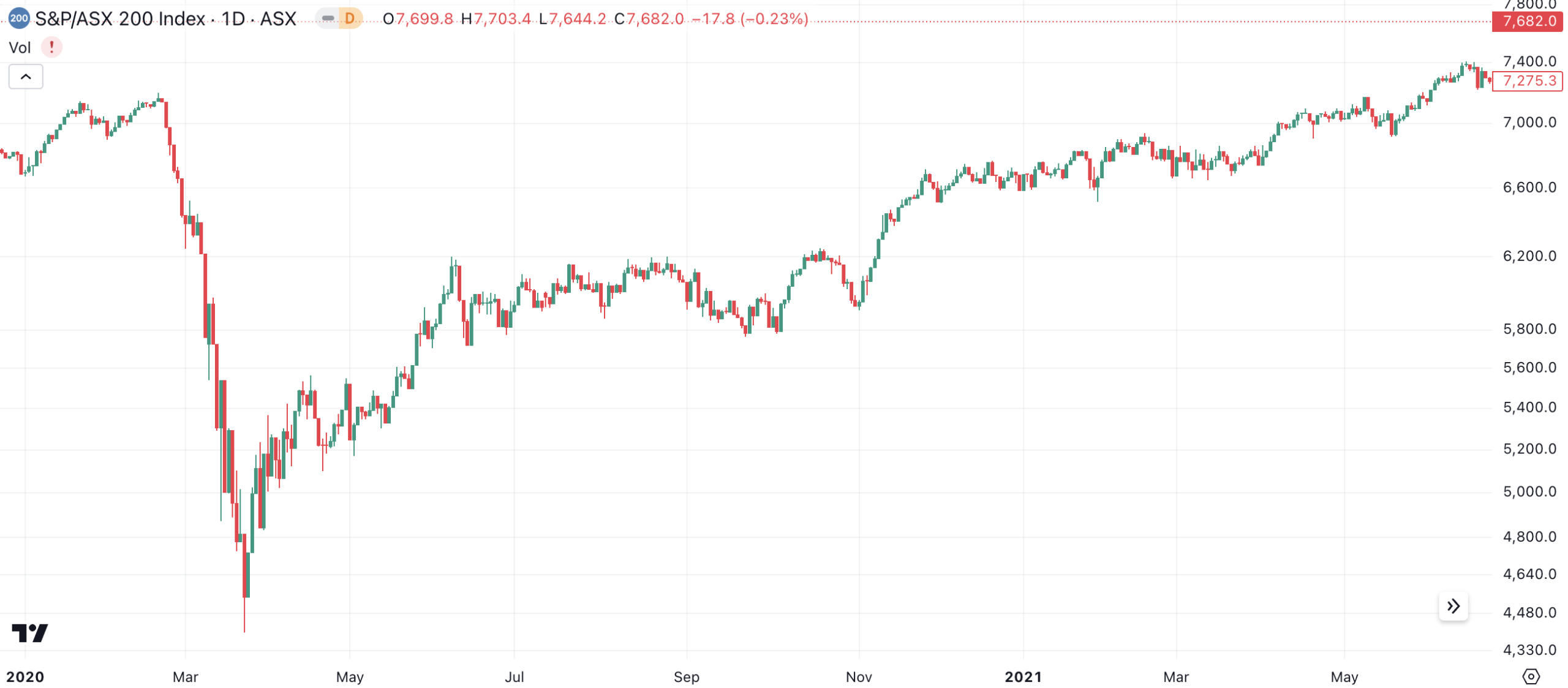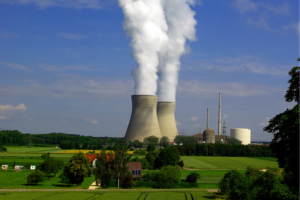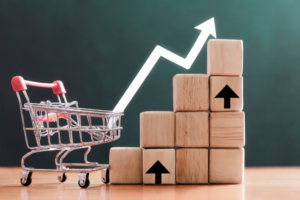Here are 5 of the worst stock market crashes of all time

If you thought the recent correction was bad, you thought wrong – it pales in comparison to the worst stock market crashes of all time. Warren Buffett once said that the stock market is a device that transfers wealth from the patient to the impatient. What he was implying is that while markets generally go up in the long-term, they sometimes go. And the opportunity to make gains often present themselves at market crashes.
5 of the worst stock market crashes of all time
Great Depression
The Great Depression tops the lot – the Dow Jones shed 90% from peak to trough. This came right at the end of the so-called ‘Roaring 20s’. Economies boomed at the time, and so did the stock market. But, not too dissimilar to later crashes, many stocks’ valuations became detached from the underlying fundamentals. Those who pointed it out looked like the fools because they kept going up and up. One factor that was more extreme than other crashes is the extent to which investors, both high net worths and those with little disposable income, borrowed money to purchase shares.
When stock prices began to fall in late October 1929, panic set in. Investors rushed to sell their shares to avoid further losses, which led to a massive sell-off. The market’s decline accelerated as more people tried to exit their positions, leading to a sharp drop in stock prices.
The stock market crash lasted for so long because there was loss of confidence in the entire financial system. Many banks had invested heavily in the stock market or had made loans based on stock market collateral. As stock prices fell, banks faced huge losses and were unable to recover. This led to a wave of bank failures, further eroding public confidence.
The Great Depression began in the United States but spread throughout the world quickly due to interconnected global trade and financial systems. Many countries experienced their own financial crises and economic downturns, exacerbating the global depression.
Black Monday – 1987
The stock market crash of October 1987, is often referred to “Black Monday,” because it was one Monday in 1987 where the Dow fell 22% in a day. During more recent crashes, the indices had losses of 4-5% in a day, but not over 20% in one day.
Stock trading had changed a lot since the 1930s, even though there was more technological advancement to happen. One of the major triggers was the widespread use of program trading, which involves computer algorithms that execute trades based on pre-set criteria. These programs were designed to sell stocks automatically when certain market conditions were met. As the market began to decline, these programs triggered massive sell orders, exacerbating the decline and causing a feedback loop of selling. There were other root causes too, including concerns about higher interest rates, trade imbalances and geopolitical tensions.
As stock prices began to fall sharply on October 19, 1987, panic set in. Investors, influenced by fear and uncertainty, rushed to sell their stocks, which further drove down prices. The sheer scale of the sell-off led to a dramatic one-day drop in major stock indices. Also consider that at the time, there were no effective mechanisms in place to halt trading during a major downturn. Unlike today, where circuit breakers can temporarily halt trading to prevent panic selling, the lack of such measures in 1987 contributed to the rapid and severe decline.
Despite the severity of the crash, the markets recovered relatively quickly, and the long-term economic impact was not as severe as the Great Depression.
Dot com bubble
The dot-com bubble, which burst in 2000, was driven by a confluence of factors related to technology and internet-based companies. The NASDAQ fell 80% from its 2000 peak up to October 2002.
The late 1990s saw a surge in investor enthusiasm for technology and internet-based companies. Many investors were eager to invest in the “next big thing” without fully understanding the business models or financial fundamentals of these companies. This speculative frenzy led to inflated stock prices and a market bubble. Many dot-com companies, especially startups, were highly overvalued. These companies often had little or no profit or revenues (sometimes not even much of an operation – Peter Thiel reported in one of his books that he had a friend preparing an IPO for a company that had not even been incorporated yet). However, their stock prices soared based on the expectation of future growth and market dominance. Valuations were driven by the belief that the internet would revolutionise business and daily life, leading to unrealistic projections of future earnings.
Broader economic factors also contributed to the bubble burst, including concerns about rising interest rates and a potential slowdown in the economy and the impacts of the 9/11 attacks. These factors added to the negative sentiment and contributed to the market decline. The media too, played a crucial role in amplifying the hype around the dot-com boom. Stories of internet entrepreneurs becoming wealthy overnight and companies achieving sky-high valuations fueled the fear of missing out (FOMO) among investors, driving more people to invest in tech stocks.
When the bubble burst, many tech companies saw their stock prices plummet, leading to significant financial losses for investors and the collapse of several high-profile tech firms. The dot-com crash had a considerable impact on the technology sector but also led to a period of consolidation and more realistic valuations in the subsequent years. Ultimately, some companies survived and emerged stronger than ever – Amazon being the best example of a company that lived to fight another day after a near-death experience.
GFC
This one will be more familiar to investors’, being in their recent memories.
In the years leading up to the crisis, there was a significant housing bubble in many countries, particularly in the United States. Housing prices soared due to speculative buying, easy credit, and lax lending standards. When the bubble burst, home values fell sharply, leading to widespread mortgage defaults and foreclosures. Banks and financial institutions issued a large number of subprime mortgages, which are loans given to borrowers with poor credit histories. These loans often had adjustable rates that started low but increased significantly over time. When housing prices dropped and interest rates rose, many borrowers defaulted on their mortgages.
Financial institutions bundled mortgages into complex financial products called mortgage-backed securities (MBS) and collateralised debt obligations (CDOs). These products were sold to investors worldwide. The risk was spread across the global financial system, but the true level of risk was often obscured, leading to widespread exposure to the housing market’s downturn. The use of financial derivatives, such as credit default swaps (CDS), allowed investors to bet on the performance of MBS and CDOs. Many financial institutions were highly leveraged, meaning they borrowed significant amounts of money to increase their investment returns. When the underlying assets declined in value, the high leverage amplified losses and led to financial instability.
Regulatory frameworks and oversight were insufficient to address the risks posed by the growing complexity of financial products and the high levels of leverage. Many financial institutions engaged in risky practices without adequate scrutiny from regulators. As the value of MBS and CDOs plummeted, financial institutions faced enormous losses. Some banks and financial firms, such as Lehman Brothers, failed or were forced into bankruptcy. The resulting credit freeze made it difficult for businesses and consumers to obtain loans, leading to a severe economic slowdown.
The interconnectedness of global financial markets meant that the crisis quickly spread beyond the United States. Financial institutions and economies around the world were affected by the collapse of the U.S. housing market and the ensuing financial turmoil. The crisis led to a widespread loss of confidence in financial institutions and markets. Investors pulled out of markets, and banks were reluctant to lend, further exacerbating the economic downturn.
The 2008 financial crisis led to severe global economic contractions, widespread unemployment, and significant financial market turmoil. The US saw a peak to trough GDP decline of 4%. Australia avoided the technical definition of a recession – 2 straight quarters of negative growth – but its share market still fell (by 50%) and has barely surpassed its pre-pandemic highs.
Corona Crash
Corona. Enough said really. Investors believe in February and March 2020 that the world was coming to end for companies, unless you told hand sanitisers and toilet paper. Ultimately, the market recovered slow and steadily, and it gave rise to another bubble in speculative tech stocks that burst as interest rates rose in 2022.

ASX 200 during 2020, log scale (Source: TradingView)
What are the Best ASX Stocks to invest in right now?
Check our buy/sell tips
Blog Categories
Get Our Top 5 ASX Stocks for FY26
Recent Posts
Silex Systems Enters the ASX 200: Is This Uranium Stock Ready for Prime Time?
Silex Moves Into the ASX 200 Spotlight Silex Systems (ASX: SLX) officially joined the S&P/ASX 200 on Monday as part of…
Nick Scali Surges 10% on Profit Upgrade: Buy, Hold, or Take Profits?
Nick Scali Jumps as Demand Lifts Nick Scali (ASX: NCK) surged 10% on Monday after the furniture retailer upgraded its…
Is Pro Medicus (ASX:PME) a Buy After the 34% Pullback?
Pro Medicus slips, growth momentum remains Pro Medicus (ASX: PME) has dropped approximately 34% from its record high of A$336…



